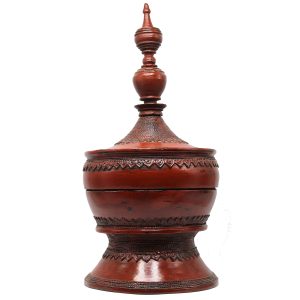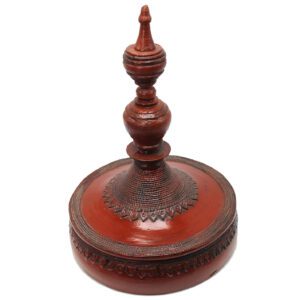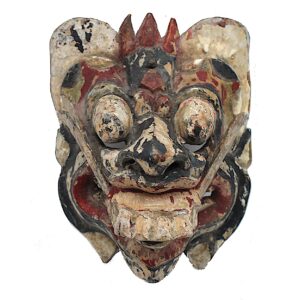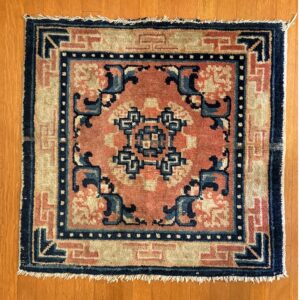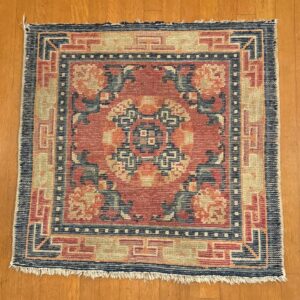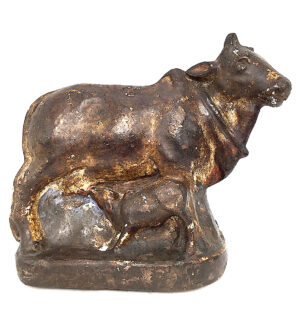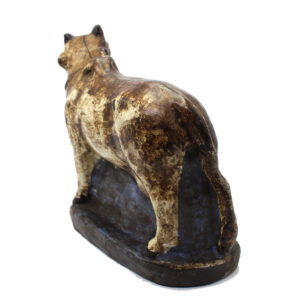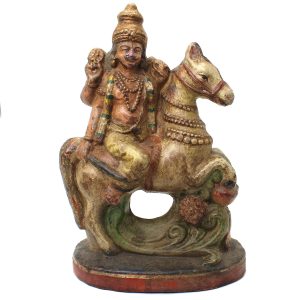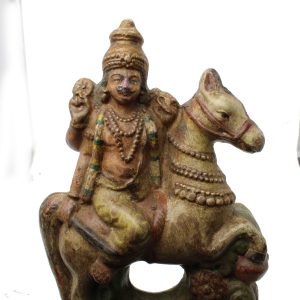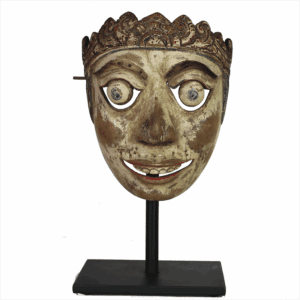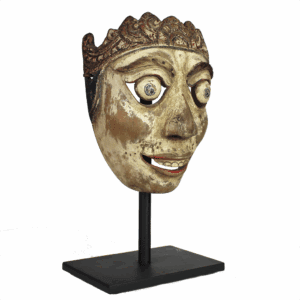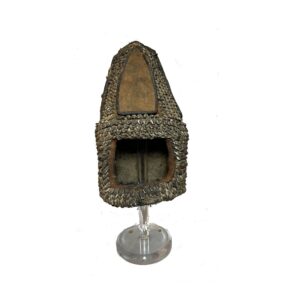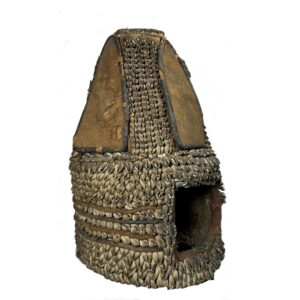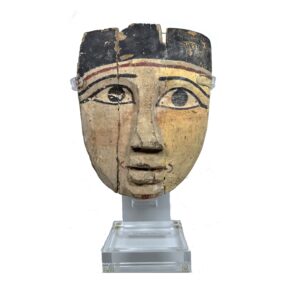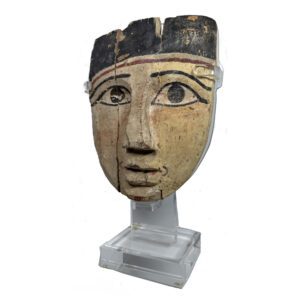Showing 157–164 of 164 results
-
Sale!


$335.00 Original price was: $335.00.$275.00Current price is: $275.00.
H: 16.25 ” Dia: 8 ” | FREE SHIPPING WITHIN CONTINENTAL U.S.
Given its size this smaller early 20th century Hsun-ok with simple sophisticated designs of with parallel rows of intricate triangular and beaded borders may been placed as decorative piece on a home altar.
-
Sale!


$395.00 Original price was: $395.00.$315.00Current price is: $315.00.
H: 6.3″ W: 4.8″ D: 2.5″ | FREE SHIPPING WITHIN CONTINENTAL U.S.
Rare Rangda mask from Indonesia island of Lombok made by Balinese Hindu craftsman is a child’s toy or mask used to teach child dancers cultural and artistic traditions. Made to instill fear with fangs, bulging eyes and protruding teeth. Missing lower fang indicate it was “de-commissioned.”
-
Sale!


$375.00 Original price was: $375.00.$315.00Current price is: $315.00.
H: 26″ W: 26″ | FREE SHIPPING IN CONTINENTAL US
Made from wool and natural dyes this small vibrant vintage carpet square can be used for meditation, an accent piece or hung on a wall. The center has 4 stylized bats, the ultimate symbol of good luck, blessings, happiness and riches.
-
Sale!


$105.00 Original price was: $105.00.$85.00Current price is: $85.00.
H: 7″ W:8.25″ D: 3.125″ | FREE SHIPPING WITHIN CONTINENTAL U.S.
Vintage bivalve mold figures like this cow were hand luted and hand painted, in the likeness of Hindu religious figures, soldiers, animals are used in rural India where they are seen as wishes for a better life.
-


$145.00
Earthenware terracotta pottery has played a significant role in the cultural, religious and artistic traditions of India for centuries. Indian terracotta images are considered spiritual, mystical and auspicious as Hindus believe terracotta incorporates the five natural elements of air, fire, earth, water and metal. Made with a bivalve mould that is hand luted and hand…
-
Sale!


$550.00 Original price was: $550.00.$450.00Current price is: $450.00.
H: 7.25″ W: 6″ D: 3.25″ | FREE SHIPPING WITHIN CONTINENTAL U.S.
Vintage mask of a king made by Balinese carver on island of Lombok blending Hinduism and animism. Mounted on museum quality stand.
-
Sale!


$485.00 Original price was: $485.00.$395.00Current price is: $395.00.
H: 15″ W: 9″ D: 9″ | CALL 213-568-3030 OR EMAIL [email protected] FOR SHIPPING COST
This “crown” called a “house of the head,” was made to show gratitude for the power of the head reflecting Yoruba ideas of individuality and authority. Crowns were placed on altars for prayer and divination and were a symbol of a Yoruba deity. This headdress was in the San Francisco International Airport, “Crowning Achievements” exhibition April-August, 1994.
-
Sale!


$2,600.00 Original price was: $2,600.00.$2,200.00Current price is: $2,200.00.
on Stand – H: 17.5″ W: 9.875″ D: 5″ | CALL 213-568-3030 OR EMAIL [email protected] FOR SHIPPING.
Painted masks adorned the of sarcophagus of mummified individuals, serving a protective and spiritual function in Egyptian burial rites. Crafted with beautiful stylized features, it dates from the Ptolemaic Period (305-30 BCE).
End of content
End of content

